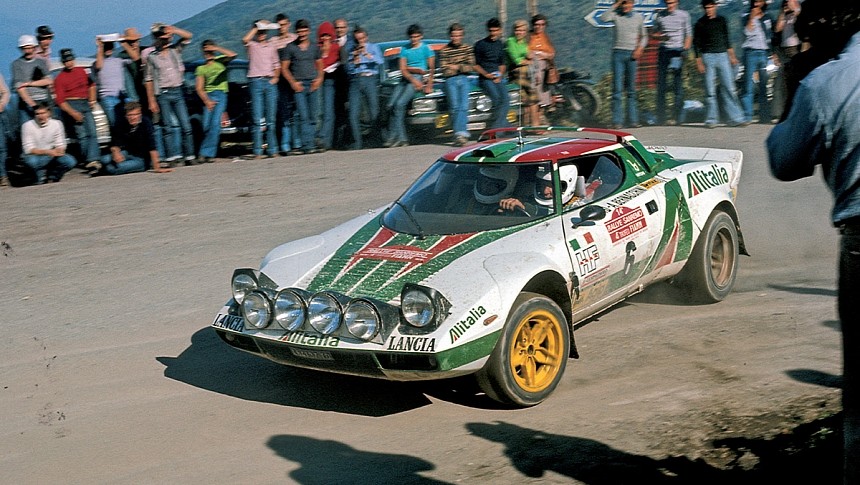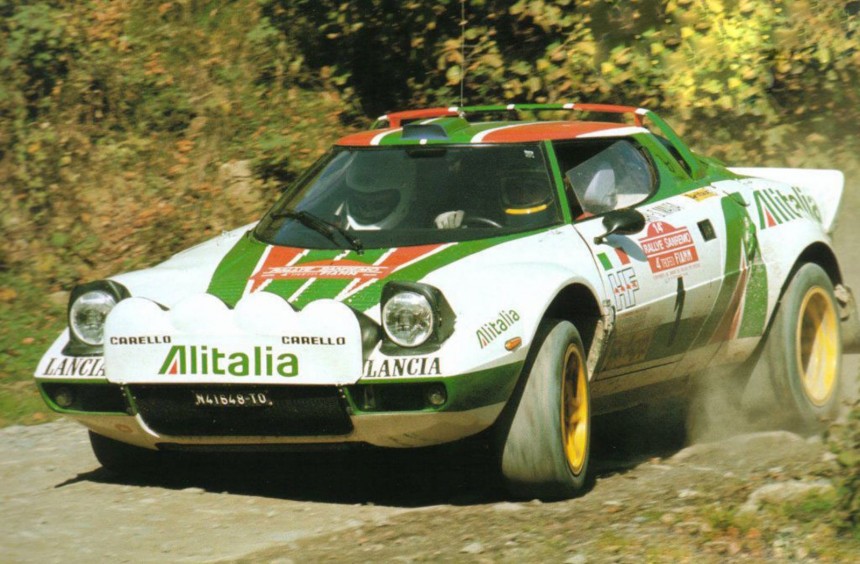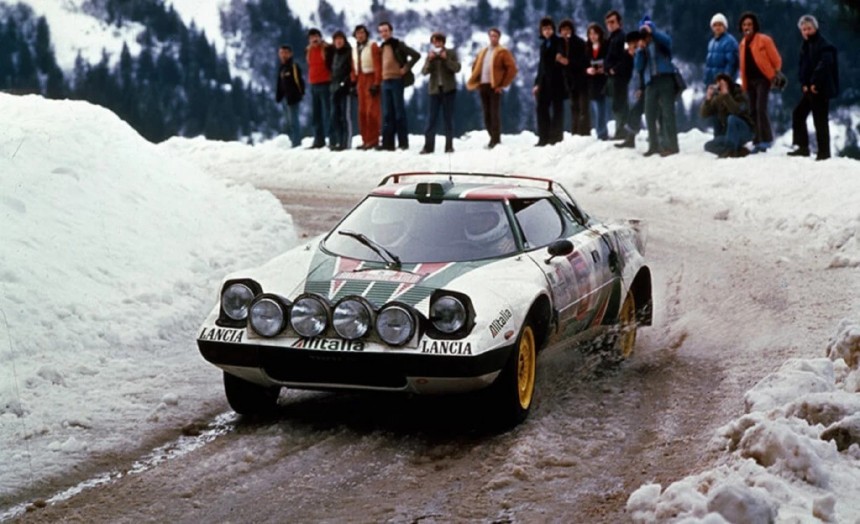It is remarkable to think that despite not competing in the series for decades, Lancia is still the manufacturer with the most World Rally Championship constructors crowns, winning the title with cars like the Stratos, 037, and Delta Integrale. The Stratos would become a true Lancia legend, as it won three world titles on the spin in the 1970s as well as the 1974 Targa Florio, and it amassed a total of 18 WRC victories over that time.
The Stratos earned Lancia its first WRC title and second World Championship, making it one of the most historically significant cars in the history of the manufacturer. Now, the Stratos is an all-time classic, remembered best for those all-conquering days back in the 1970s.
The Stratos would feature the iconic wedge-shaped styling that was first seen on the Lamborghini Miura. Gandini had himself designed the Miura and was busy at work on the new Countach as well. The hood was made of two lightweight shells, including the mudguards, and the cockpit had room for just two people and almost nothing else. Enzo Ferrari was convinced to supply the Dino 246 engine for the Stratos, with the engine in a transverse position. Once teething troubles were ironed out, it didn’t take long for the Stratos to take its first rally victory.
The Stratos entered rallies late in 1972, but it was in 1973 that its success really started. The car won the Firestone Rally in Spain in April 1973, before it was homologated for WRC competition in late 1974. The Stratos would go ahead and win the Sanremo Rally, the Rideau Lakes Rally in Canada as well as the RAC Rally in the UK. It would also win that year's Tour de Corse, meaning Lancia had enough points to clinch its first WRC crown in 1974. This kickstarted the run of dominance that the Stratos would become so famous for.
It was in the iconic Alitalia colors that the Stratos won the 1975 and 1976 WRC titles. The car racked up victory after victory, winning the Monte Carlo Rally three years in a row and winning the European Drivers Championship as well as the FIA Rally Drivers World Cup in 1977. The Stratos had won three WRC titles in a row and should have won more. But internal politics within Fiat placed rallying responsibility onto the Fiat 131 Abarths. A car that would win the titles the Stratos should have in 1977, 1978, and 1980.
It also proved that, with even more development, the Stratos could have dominated the WRC even more throughout the 1970s and into the 1970s. What the Stratos did do, though, was kickstart a run of titles for Lancia in the WRC that would see the manufacturer win a total of 10 WRC titles, with the last of those coming in 1992.
After the Stratos, the next Lancia WRC title came in 1983 with the mighty 037. This iconic car was the last two-wheel drive vehicle to ever win the WRC and the only one to ever beat Audi’s mighty Quattro in the iconic 1983 season. Following that, the Lancia Delta HF 4WD would win an astonishing six titles on the trot from 1987 through to 1991. Lancia would win a total of 5 WRC drivers titles, the first of those with Sandro Munari driving the Statos. Today, the Stratos is one of the most recognizable classic cars in the world. Its wedge styling and Ferrari engine are a reminder of its glory days in the WRC when Lancia ruled the world of motor racing.
Why Lancia developed the eye-catching Stratos
At the start of the 1970s, Lancia needed a new car to replace its aging Fulvia. The Fulvia had earned Lancia its very first world rally title by winning the 1972 International Championship for Manufacturers, the precursor to the modern-day WRC that began in 1973. The Bertone design house presented the sensational Lancia Stratos Zero concept, which kickstarted the partnership that would lead to the new Stratos, based on the ideas of Marcello Gandini. The first true Stratos prototype was revealed at the 1971 Turin Motor Show, and the final engine choice would be the mid-mounted Ferrari Dino V6.The Stratos would feature the iconic wedge-shaped styling that was first seen on the Lamborghini Miura. Gandini had himself designed the Miura and was busy at work on the new Countach as well. The hood was made of two lightweight shells, including the mudguards, and the cockpit had room for just two people and almost nothing else. Enzo Ferrari was convinced to supply the Dino 246 engine for the Stratos, with the engine in a transverse position. Once teething troubles were ironed out, it didn’t take long for the Stratos to take its first rally victory.
The Stratos exploded onto the World Rally scene
It was in the iconic Alitalia colors that the Stratos won the 1975 and 1976 WRC titles. The car racked up victory after victory, winning the Monte Carlo Rally three years in a row and winning the European Drivers Championship as well as the FIA Rally Drivers World Cup in 1977. The Stratos had won three WRC titles in a row and should have won more. But internal politics within Fiat placed rallying responsibility onto the Fiat 131 Abarths. A car that would win the titles the Stratos should have in 1977, 1978, and 1980.
The Stratos was successful even without Fiat factory support
Despite the politics that raged on, the Stratos carried on being highly successful. The car remained a serious competitor on the world stage, beating works vehicles on several occasions even with the added restrictions on engine power. The Stratos took seven WRC wins post its 1976 title, with the last of those coming in 1981 at that year's Tour de Corse in the hands of Bernard Darniche and co-driver Alain Mahe. The fact the Stratos could win against the likes of the Quattro proved just how strong it was.It also proved that, with even more development, the Stratos could have dominated the WRC even more throughout the 1970s and into the 1970s. What the Stratos did do, though, was kickstart a run of titles for Lancia in the WRC that would see the manufacturer win a total of 10 WRC titles, with the last of those coming in 1992.




















